Springs Rest
Springs Rest
World
Kurra
Plane
Prime Material
Continent
The Great Continent
Region
South-Central Kurra
Area
Southeastern Dominion
Metropolitan Area
Springs Rest
Administrative Area
5.25 mi.2
Outlying Area
439 mi.2
Total Area
444 mi.2
Livable Land in the Administrative Area
4.94 mi.2
Livable Land in the Outlying Area
294 mi.2
Livable Land in the Metropolitan Area
440 mi.2
Arable Land in the Administrative Area
0.37 mi.2
Arable Land in the Outlying Area
187 mi.2
Arable Land in the Metropolitan Area
189 mi.2
Demonym
Springers
Population (administrative area)
abt. 7,400 residents
Population (outlying area)
abt. 41,510 residents
Metropolitan Population
abt. 49,000 residents
Population Density
1,410 residents per mi.2
Population Density in the Outlying Area
94 residents per mi.2
Population Density in the Metropolitan Area
110 residents per mi.2
Population Density of the Livable Land in the Administrative Area
4.94 residents
Population Density of the Livable Land in the Outlying Area
294 residents per mi.2
Population Density of the Livable Land in the Metropolitan Area
189 residents per mi.2
Population Density of the Arable Land in the Administrative Area
20,316 residents per mi.2
Population Density of the Arable Land in the Outlying Area
220 residents per mi.2
Population Density of the Arable Land in the Metropolitan Area
259 residents per mi.2
Established
Unknown (likely over 2,500 y.a.)
Incorporated
395 AB
Country
Dominion of Free Peoples
Region
Southeastern Council
Power Structure
Semi Autonomous Feudal Holding
Government’s Name
The Village Council of Springs Rest
Government Type
Indirect Unicameral Parliamentary Republic
Head of State
Council Conductor
Head of Government
Council Conductor
Council Conductor
Zahara Tobruk
Writer of Statutes
Farruz Maram
Writer of Records
Hadir Bodash
Coin Custodian
Taybia Khalifa
Springs Rest is a village in the southwestern portion of the Dominion of Free Peoples. It is the largest settlement in its region. In addition it is a local center for trade and production in the region. It has been populated since the time before memory and signs point to many centuries of occupation by various groups including Orcs, Humans and Dwarves.
The village is centered around the natural spring which flows from the natural limestone. Since before memory, the village has been a popular resting point on the road through the arid region. The spring is so important that it features prominently on the official crest and documentation.
Springs Rest has been part of the Dominion for the past 200 years when the Village Council chose to be annexed as opposed to fall victim to the Vranic Empire’s continuing expansion. Since then it has been a faithful outpost of the Dominion while simultaneously being left much to its own devices.
Self-Governing Village and Municipality
Image Details
Zenamath na dra Itan (Unknown)
Artist Mazud Dresa Saiat (d. 14 AB)
Artist Crest of Springs Rest, Unknown
Orpiment, malachite, gold, charcoal, azurite and chalk paints on papyrus fiber paper The village crest and coat of arms for Springs Rest. It features the ancient year old fountain at the village center, the natural spring, date palms and a representation the surrounding hillside. It was created to serve as a seal on official documents. It is also painted on the armor, shields and banners of soldiers from Springs Rest as a form of identification and decoration. The seal is also painted as a decorative element on items related to the official business of Springs Rest such as crates of goods, buildings owned by the Council or the community.
Artist Mazud Dresa Saiat (d. 14 AB)
Artist Crest of Springs Rest, Unknown
Orpiment, malachite, gold, charcoal, azurite and chalk paints on papyrus fiber paper The village crest and coat of arms for Springs Rest. It features the ancient year old fountain at the village center, the natural spring, date palms and a representation the surrounding hillside. It was created to serve as a seal on official documents. It is also painted on the armor, shields and banners of soldiers from Springs Rest as a form of identification and decoration. The seal is also painted as a decorative element on items related to the official business of Springs Rest such as crates of goods, buildings owned by the Council or the community.
Locational Information
Geographic Information
Population
Human Geography
History
Governance
Demographics
The demographics of Springs Rest reflect its prominence as a stop-over point along the main east-west road through the region. On the last counting, the Recorder of the Village Rolls noted approximately 7,400 permanent residents within the village bounds. An average of 5,000 non-residents travel through the village in any given month with 15,000 travelers in peak times like the winter.
The average age at death (scaled to Human years) is 52 years and 8 months. The main threats to life are drought and starvation in the dry, summer months especially among the poorer residents of the village. Diseases spread by biting flies such as Sleeping Sickness crop up during the late summer and fall months. While the village’s water supply is clean, plentiful and secure the open sewers have led to outbreaks of Diphtheria, Typhoid, Typhus and Cholera. These diseases are also more common during the late summer and fall months. Flash floods and landslides are additional threats to life in the village during the early spring months when the rains run off of the mountains and damage the village in the valley below.
Ethnic Breakdown
The village’s inhabitants are very ethnically diverse especially when compared to the surrounding countryside. The largest ethnicity are Humans and Human-descendents which make up 32% of the population. Orcs and Orcish-decedents make up the next largest ethnic demographic with 21%. Elves and Elvish-decedents make up the third largest group with 18% of the population. Dwarves, Gnomes and their respective decedents are tied for the fourth largest group with 11% apiece. Various other ethnicities make up the remaining 7% of the population. The large, travling population has led to a much higher than average population of mixed-race people. As a result, racial identity is much less important in Springs Rest than in other parts of Kurra. Recent cultural movements have promoted the mixture of races and peoples as a sign of commercial, population and cultural growth in the area. This is contrasted greatly with the surrounding hamlets and farmsteads which are strongly Orcish and Human with very little mixture between groups. Mixed-race people are welcome in these rural areas but they are seen as a rarity and often with curiosity from the permanent inhabitants.Government
Springs Rest is self-governing village within the Dominion of Free Peoples. The village is run as a representative democratic parliamentary republic. Springs Rest is also the de facto government for the surrounding region.
Legislative and executive duties are handled by the Village Council. The Council is elected by the rest of the village every five years. Members must be permanent residents of the village for the last five years and have no allegiances entities other than the village and the Dominion. The Council meets at least once a week to address the business of the village, enact ordinances, issue directives and hear the needs of its residents. Every lunar cycle, the Council must post a list of upcoming measures, ordinances and directives that will be voted on by the Council in the coming cycle.
The Village Council is comprised of ten people with four permanent positions that each person holds for one-year tenures. The positions on the Council are:
The Council Coordinator who is responsible for calling meetings, leading meetings and ensuring that business is addressed accordingly.
The Writer of Statues who is responsible for writing new laws, ordinances and regulations to be voted on. They are supposed to not have an agenda and work at the pleasure of the Council as need for regulations arrise.
The Writer of Records who is responsible for recording the minutes of meetings, writing announcements to the general public, keeping the history of town and gathering information for the Council as needed.
The Custodian of Coins who is responsible for keeping the finances of the Village, ensuring the security of the village’s coffers and offering suggestions to the Council for monetary matters.
Disputes between residents of the village are handled by the Village Council unless they concern the Council itself. If there is an issue between the Council and a resident, a panel of seven elders is chosen and agree upon by all parties involved. In both situations, all parties present their case and any supporting evidence. The panel may ask for further proof or investigation. All investigations are handled by parties without a vested interest in the matter. The panel has to come to a majority vote for all matters and their decision becomes policy.
Springs Rest has sworn loyalty to the Dominion and continues to do so through the present day. As a result, the Dominion pretty much leaves Springs Rest to handle their own affairs. Springs Rest is responsible for their own law enforcement, laws and ordinances so long as they do not conflict with the interests of the Dominion.
The Dominion also leaves Springs Rest to administer the surrounding area. Although there is no definitive bounds, the Village has effective control over the homesteads, hamlets and settlements for a day’s ride in all directions. Springs Rest generally leaves the outlying areas to their own governance but occasionally collects taxes, resolves disputes, provides occasional law enforcement duties, adjudication and a market to buy or sell goods. In general, the further away from Springs Rest the settlement is, the less interaction is has with the village and visa versa.
Defences
Springs Rest is not a traditionally defended settlement. There are no walls around its perimeter to keep attackers at bay. This means that there are no perimeter towers towers to keep a watch nor are there gates to prevent people from entering or leaving.
Even with that, Springs Rest is a well-defended village. It benefits from a combination of formal defenses (like strongholds,) informal defenses (like the layout of the city) and natural conditions (such as mountains and desert.)
The location of the village itself is a built-in natural defense of the settlement. It is far from other settlements that could be used for supply. It is in the middle of a very arid area with few options for water in the surrounding area (especially if attacking from the north or east.) The surrounding desert and thorn scrub is very uncomfortable to march through for outside armies. Additionally, the hills and mountains leading up to the range from which the settlement is built into offers plentiful opportunities for ambushes and the use of high ground to create asymmetrical warfare opportunities.
It draws its best defense from is position in a valley between two large mountains. The pass that the two mountains forms creates a choke point to the east of the village. This has allowed the village guard to defend the city against much larger attackers on several occasions. The mountains are also almost impassible and do not allow for large amount of soldiers to outflank the village or bypass any of its defenses.
At the edges of the village’s boundaries are watch towers. The towers generally keep a lookout for threats on the horizon. As they are positioned along the major trade routes, they provide some oversight of who comes or goes into the village proper. Anyone known to the guard as a problem will often be first identified from the towers and communicated to the soldiers below to apprehend the offenders.
On either side of the main east-west road there are guardhouses. They guard houses are essentially large fortified buildings that house guards and provide some form of defense of the city proper. Their basements serve as holding cells for prisoners as well as barracks for the guard forces for their respective areas.
The village also benefits from more informal defenses. The buildings along the outside edges of the town are built closely together, with few windows or opening facing outward; this creates a quasi stucco and stone wall of buildings that make it difficult for soldiers to penetrate without being a typical wall. If need be, the village guard takes position on the roves of these buildings as a means of defense and has been known to boobytrap buildings in case they are breached from the outside. Although the main roads are wide an open, the city itself is a confusing series of twisting, winding and very narrow roads. These create plenty of opportunities for outsiders to get lost while creating choke points for defenders. The narrowness of the streets also makes blockading and barricading them much easier than other settlements. The buildings typically tower over the streets and provide a definite height advantage for defenders.
The final line of defense for the inhabitants of Springs Rest is the Kasbah, the imposing fortress build into the hill in the village center. The Kasbah has an outer and inner curtain wall, a fortified keep as well as numerous defenses around the building. Although it is small in footprint, it is a tall and imposing symbol of impenetrability. The Kasbah can house the majority of the village’s permanent inhabitants and has never been overcome. It typically has enough supplies to support a full garrison for nine months to a year depending on the rationing regime. For as long as creatures can remember, no hostile foreign power has been able to completely occupy Springs Rest.
Industry & Trade
Production of good, services, tade and hospitality are the main economic engines of Springs Rest. More wealth is generated for the village from trade but more people profit and are involved in the production of goods and services. The wealth generated by these economic engines led to an accumulation of wealth in the residents of Springs Rest at a much higher level that in much of the Dominion.
Trade
Trade generates the most wealth for the residents and government of Springs Rest by far. It is a a major stop along the main east-west road that forms a link between the Dominion and the Vranic Empire. Traders from all of Kurra pass through Springs Rest on their way to points elsewhere. They also trade a portion of their wares in the town. As a result goods like spices, jewelry, magic items, printed works and art can be found in the relatively small settlement. Often times, merchants will buy goods one outside trader’s goods then turn around and sell it to another outside merchant. These merchants are called Holders in the local parlance. Holders may also buy up one kind of good to create a scarcity on an item, wait until their buyers are desperate then sell at much higher prices. They are some of the most profitable traders in the town. Holders are looked down upon from other traders who perform more traditional deals. More traditional merchants buy from local goods from producers and sell it to traders who will turn around and sell it outside of the region. They often trade locally produced goods for those that are more rare in the region and could therefore sell at a higher profit. These merchants typically specialize in a particular field and sometimes form cartels of buyers and sellers who coordinate their prices to get the best price for the local merchants.Goods Production
Springs Rest is a hub for turning raw products into finished goods. Merchants from all around the countryside sell their barley, milk, meat, olives, dates, citrus fruits, herbs and other goods to become a wide array of finished products. Brewing, distilling and fermenting are very profitable industries for the village. Wine is the most popular good produced from the local grapes and is often augmented in flavor with dates, figs and citrus fruits. Although not the highest quality wine produced in Kurra, it is known to be flavorful and fetches a decent price outside of the region (even though it is fairly cheep to buy in the local taverns.) Producers also make a citrus mead and date liquor which is popular among the upper classes of the town. A handful of brewers turn the local barley and flavoring ingredients into a lightly colored barley beer which is popular with the lower classes and outsiders who are used to more beer than wine. Food preservation is also another large industry in Springs Rest. Products like fresh dates and olives are dried and preserved so that they can be kept for long periods of time. Goat cheese production is another popular staple that is widely consumed in the village and traded for other products. Although much less profitable, the village is the only place to get durable goods in the region. It is the largest or often times the only provider of goods such as masonry, metal works, leather goods, shoes, barrels, clothing and other common staples.Hospitality
Trade drives the hospitality and service industry. Springs Rest has more inns and taverns per capita than anywhere else in the Dominion. The village is known by most merchants as a safe and pleasurable area to rest, resupply and spend some time before moving on. The inns and taverns are typically filled to capacity and generate a large amount of money for the town. There is a separate service industry which caters toward outside merchants. Wheel makers, saddlers, farriers, coopers and other related trades fetch a steady fee for their services. There is high demand for all of these services and not many other options. There is also a very profitable, unspoken ‘comfort services’ sector of the village’s hospitality. Services aimed at outsiders are typically offered in or near inns; those catered at locals are confined to the lower socioeconomic income areas. These hospitality services are very profitable for the few people of the settlement that are involved.Other Industries
Agriculture is not as profitable as the other industries but is very important to the surrounding region. The area around Springs Rest in known for the production of dates, olives, wine, barley, citrus fruits, figs, sheep and goat products. Surplus goods are typically gathered from the outlying settlements and sold in Springs Rest to the venders there. A steady flow of carts from the countryside feeds and fuels Springs Rest.Services and Service Providers
| Service | Number of Service Providers | Number of Workers in a Service |
|---|---|---|
| Law enforcement officers | 52 Service Providers | 52 Workers |
| Maidservants (porters, valets, grooms-people, domestic servants, etc.) | 50 Service Providers | 52 Workers |
| Healers (unlicensed) and herbalists | 24 Service Providers | 28 Workers |
| Taverns/Resteraunts | 20 Service Providers | 183 Workers |
| Wine sellers | 15 Service Providers | 83 Workers |
| Carpenters | 15 Service Providers | 15 Workers |
| Barbers | 12 Service Providers | 30 Workers |
| Bakers | 12 Service Providers | 48 Workers |
| Coopers | 12 Service Providers | 14 Workers |
| Watercarriers | 12 Service Providers | 14 Workers |
| Weavers | 11 Service Providers | 58 Workers |
| Old clothes shops | 11 Service Providers | 53 Workers |
| Furriers | 10 Service Providers | 18 Workers |
| Inns | 9 Service Providers | 93 Workers |
| Shoemakers | 9 Service Providers | 47 Workers |
| Saddlers | 8 Service Providers | 52 Workers |
| Mercers | 7 Service Providers | 28 Workers |
| Purse makers | 7 Service Providers | 25 Workers |
| Tailors | 7 Service Providers | 27 Workers |
| Masons | 7 Service Providers | 37 Workers |
| Butchers | 6 Service Providers | 10 Workers |
| Spice merchants | 6 Service Providers | 16 Workers |
| Buckle makers | 5 Service Providers | 7 Workers |
| Hat makers | 5 Service Providers | 6 Workers |
| Blacksmiths | 5 Service Providers | 13 Workers |
| Harness makers | 5 Service Providers | 7 Workers |
| Tanners | 5 Service Providers | 27 Workers |
| Fishmongers | 5 Service Providers | 4 Workers |
| Roofers | 4 Service Providers | 24 Workers |
| Scabbard makers | 4 Service Providers | 4 Workers |
| Hay merchants | 3 Service Providers | 3 Workers |
| Wood sellers | 3 Service Providers | 17 Workers |
| Plasterers | 3 Service Providers | 27 Workers |
| Glove makers | 3 Service Providers | 4 Workers |
| Beer sellers | 3 Service Providers | 5 Workers |
| Bleachers | 3 Service Providers | 7 Workers |
| Locksmiths | 3 Service Providers | 4 Workers |
| Coppyists | 3 Service Providers | 3 Workers |
| Chicken butchers | 2 Service Providers | 2 Workers |
| Doctors | 2 Service Providers | 3 Workers |
| Magic shops | 2 Service Providers | 6 Workers |
| Woodcarvers | 2 Service Providers | 3 Workers |
| Jewlers | 2 Service Providers | 7 Workers |
| Rope makers | 2 Service Providers | 6 Workers |
| Bathers | 2 Service Providers | 2 Workers |
| Cutlers | 2 Service Providers | 2 Workers |
| Booksellers | 2 Service Providers | 2 Workers |
| Pastry-cooks | 1 Service Providers | 8 Workers |
| Printers | 1 Service Providers | 4 Workers |
| Book binders | 1 Service Providers | 4 Workers |
| Chandlers | 1 Service Providers | 14 Workers |
| Rug makers | 1 Service Providers | 4 Workers |
| Illuminators | 0 | 0 |
| Sculpters | 0 | 0 |
| Grand Total | 407 Service Providers | 1,214 Workers |
Infrastructure
Springs Rest is served by a fairly sophisticated road network. It is bisected by the major east-west road through the region and a major artery of trade. The town’s main streets are broad and well maintained while the side streets are typically narrow, winding and confusing. Locals know the network of roads while outsiders typically stick to the wider, more welcoming streets. Two well-maintained roads also connect Springs Rest to the rest of the region, especially the agricultural region to the southwest.
Waste is served by closed clay pipes in the wealthy areas and open sewers in all other areas. Both systems divert waste away from the settlement by the use of a slightly sloping negative grade. The closed sewers near the Spring protect it very well from all forms of waste run-off, even rainwater runoff. The closed sewers typically drain into the open sewers or out of the city limits in the case of the West End. The open sewers are aided by pumps which use well water from the water table below to wash waste down the system and out of the city.
The village is aided by a high water table which bubbles up in the spring but also makes Human-made wells easy to construct. Every few blocks has its own well which serves its residents with clean, cool water. This bit of infrastructure provides clean, free water to all residents and guests to the city.
Districts
Maps
-
Springs Rest region
This is a map of the Springs Rest metropolitan Area. It shows the portion of the Dominion that is within a day's ride of Springs Rest or that Springs Rest is the nearest large city. -
Springs Rest
The following is a map of the city of Springs Rest, in the Springs Rest region in the southeast corner of the Dominion of Free Peoples. This map shows the topographic features, boundaries, roads and landmarks of the city.Legend
Terrain
- Horizontal Dashed Line: 50 ft. Increase in Elevation
- Diagonal Dashed Line: 50 ft. Decrease in Elevation
- Thick Lines: Start of a Terrain Feature
- Thin Lines: Change in Elevation
Travel and Trade Routes
- Thick Double Lines: Major Road
- Thin Double Lines: Minor or Local Road
Boundaries
- Dotted Lines: Boundary Between District
Wealth Distribution
- Dark Green: Most Wealthy
- Dark Yellow: Above Average
- Yellow: Average
- Light Yellow: Below Average
- Dark Red: Most Impoverished
- Gray: No Inhabitants/Commerce
Note: The shades outside of the city boundaries indicate refugee camps located next to the city with their relative wealth indicatedBuilding Names
- Village Hall
- Council Chambers
- Merchants' Guild
- Village Square
- Fountain of the Common
- The Casbah
- The Village Hold
- Alaxfa Gate
- Medinaro Gate-
- Ehidah Tower
- Jalisko's Tower
- Eastwatch
- Spring House/Old Village Hall
- Street of Wines
- Street of Spices
- Street of Minor Miracles
- The Market Storehouse
- The Golden Dome Inn
- The Caravaner Inn
- The Griffin Spires Inn
- The Domes of Rest Cool
- The Spires of the Clouds Inn
- Haslan's Rarities
- Everind's Shop
- Street of Common Goods
- The Mellow Spider Public House
- The Street of Tailors
- Salmar's Workshop
- House of the Metal Workers
- Ruins of the Spring Temple
- Market of Pleasures
- House of Charms
Road Names
i: The West Road (part of the East-West Road)
ii: The Northwest Road (part of the North-South Road)
iii: The Southwest Road (part of the North-South Road)
iv: The East Road (part of the East-West Road)
v: "The Gold Road"
vi: "The Presedio"
vii: South Slope Road
viii: Tolebrook Road
ix: Makers' Road
x: North Lip
xi: The Green Causeway
Note: Road names indicators are placed at the intersection with main roads or the perceived start of the roads.
Alternative Name(s)
Figgrove
Type
Village
Population
≈ 7,400
Inhabitant Demonym
Resters
Included Locations
Owning Organization
Remove these ads. Join the Worldbuilders Guild
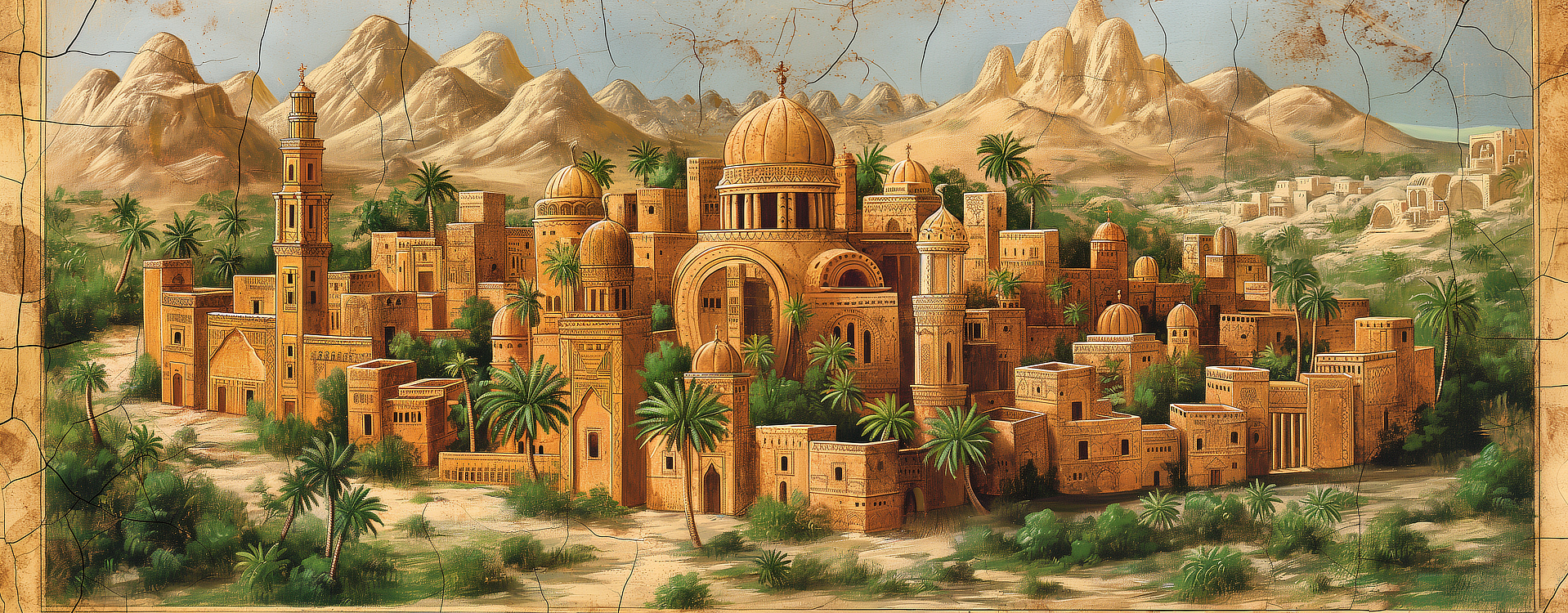
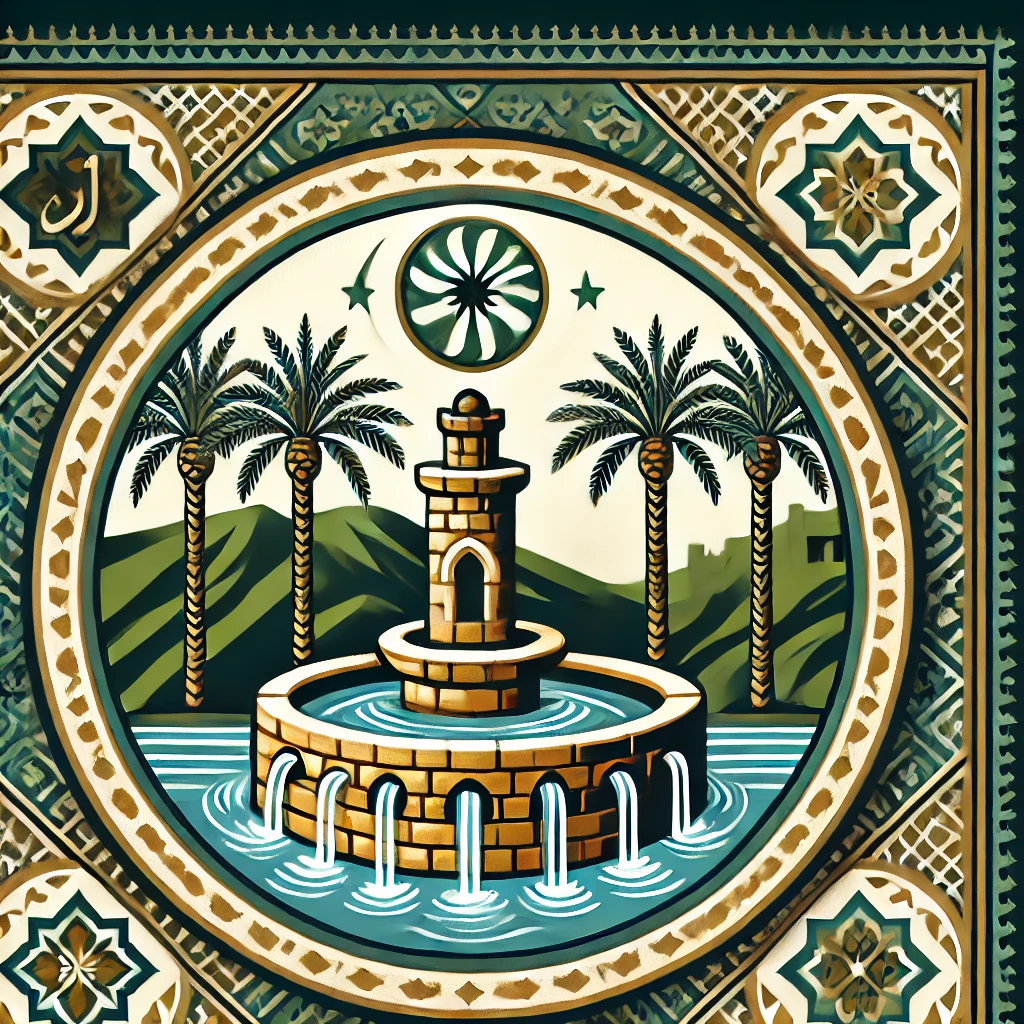
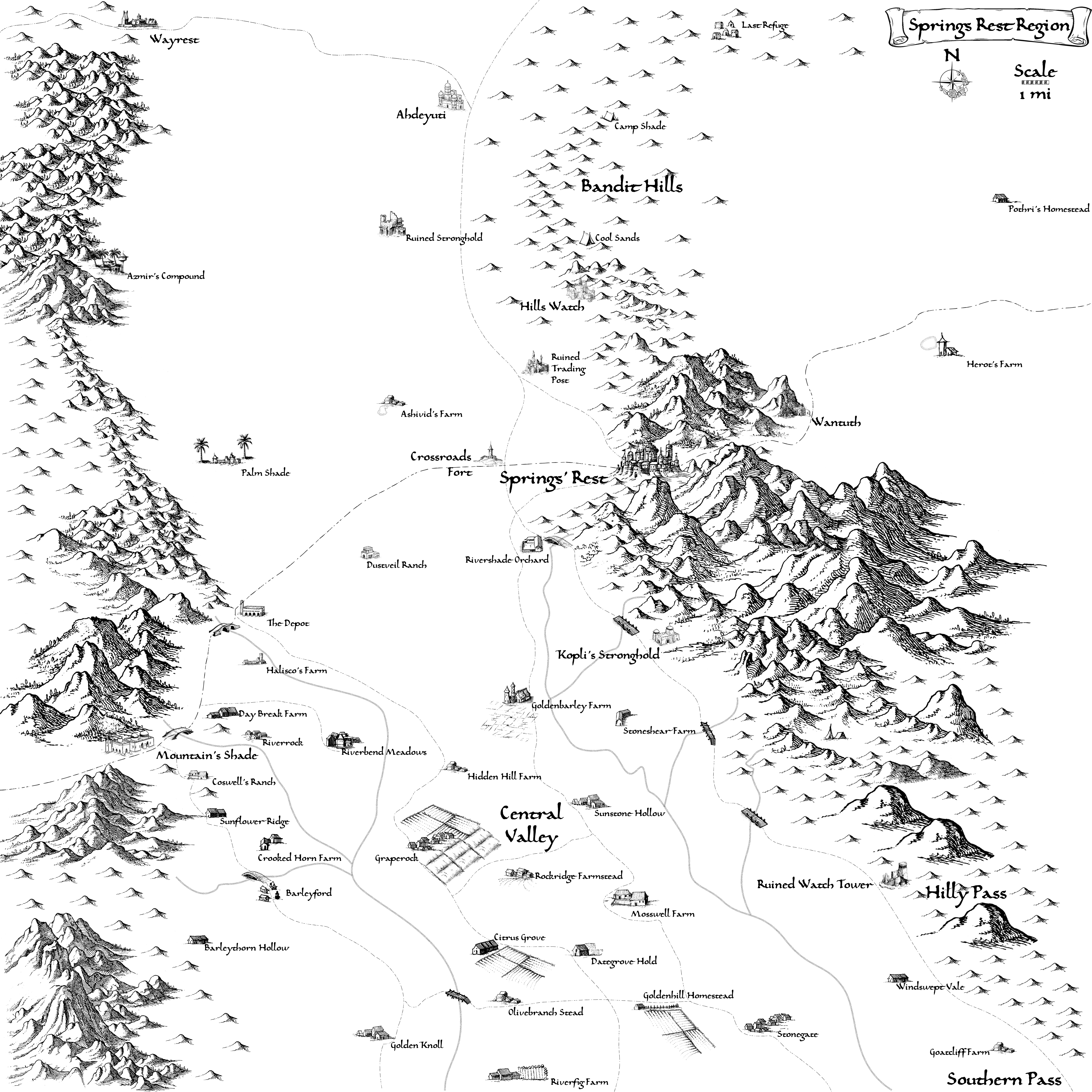
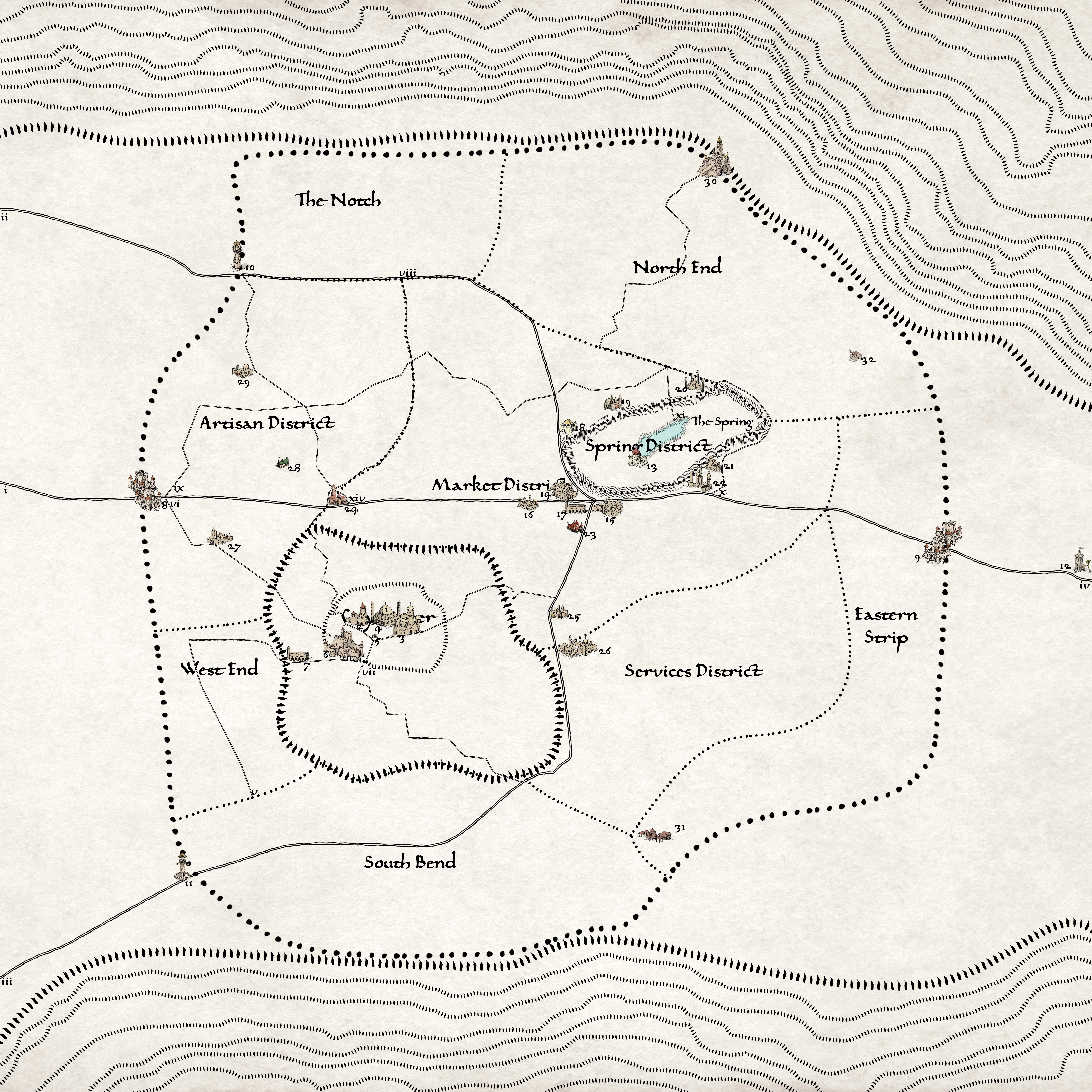

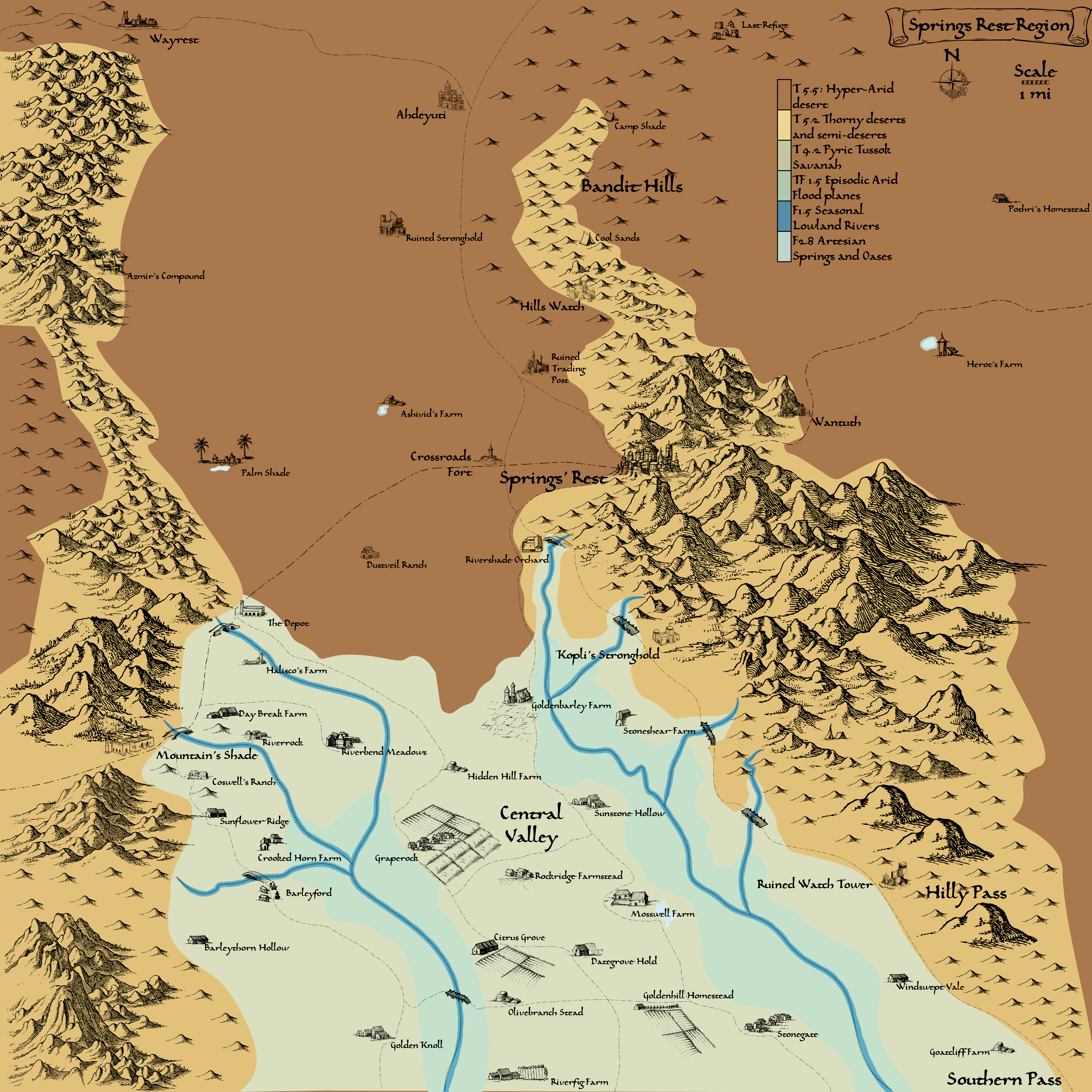
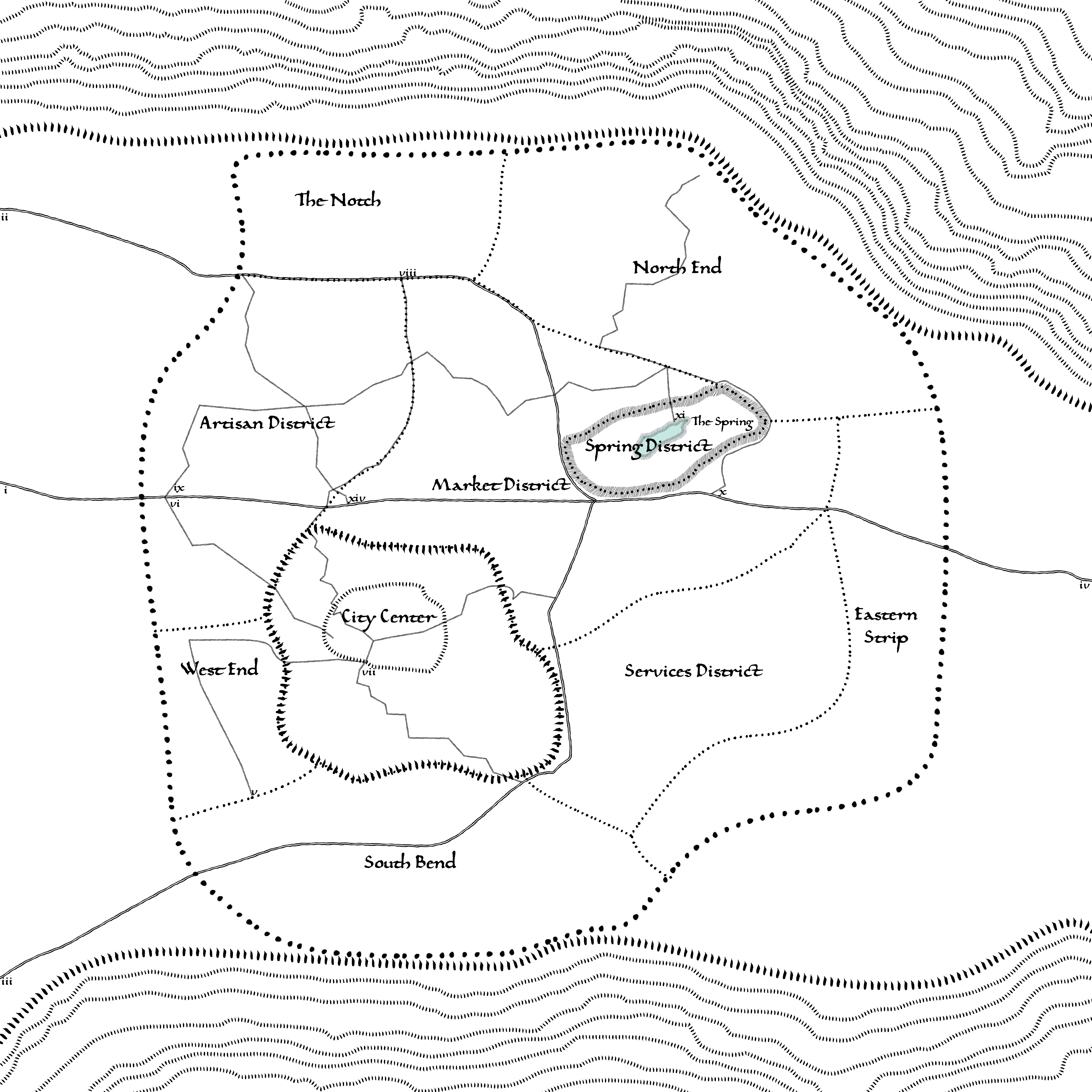
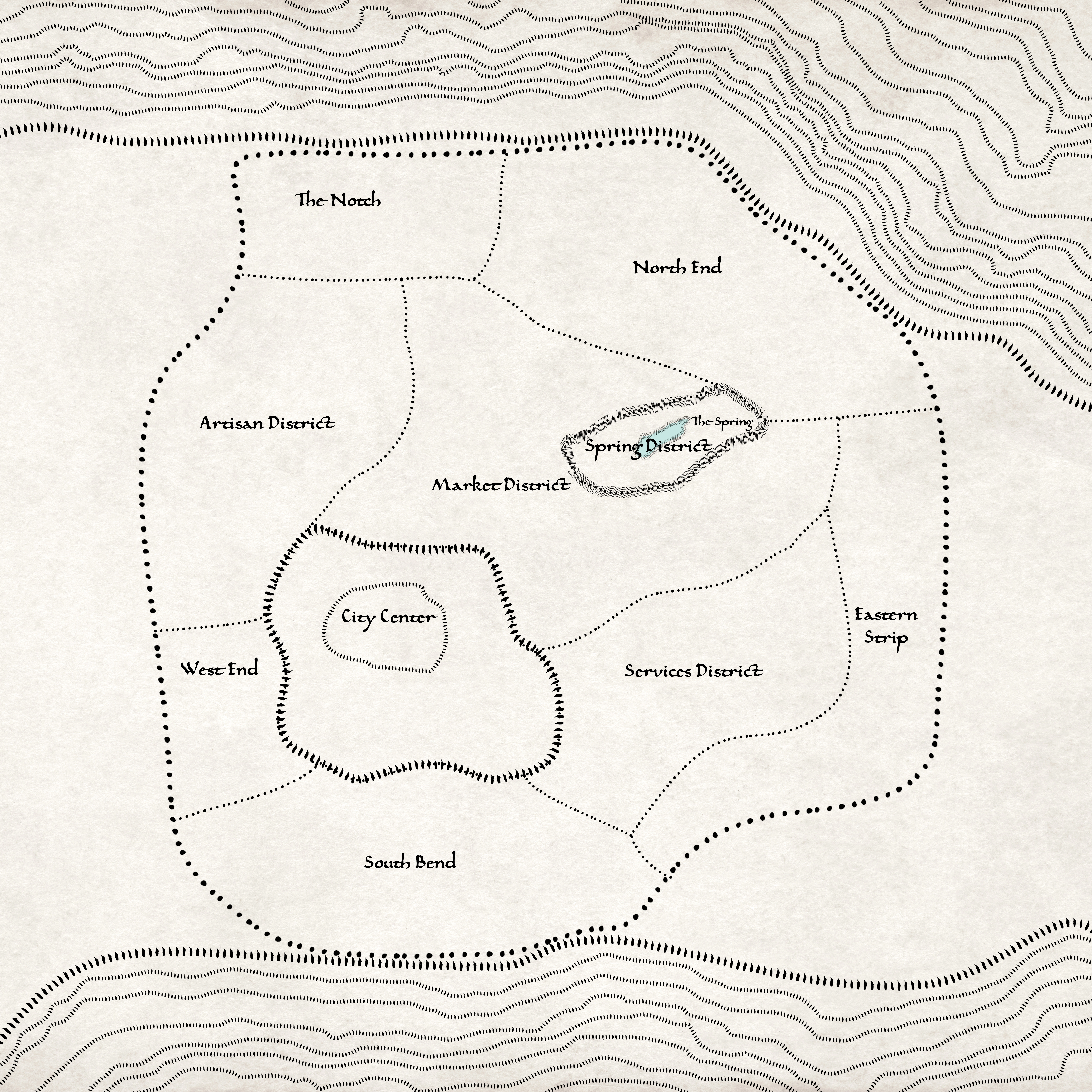
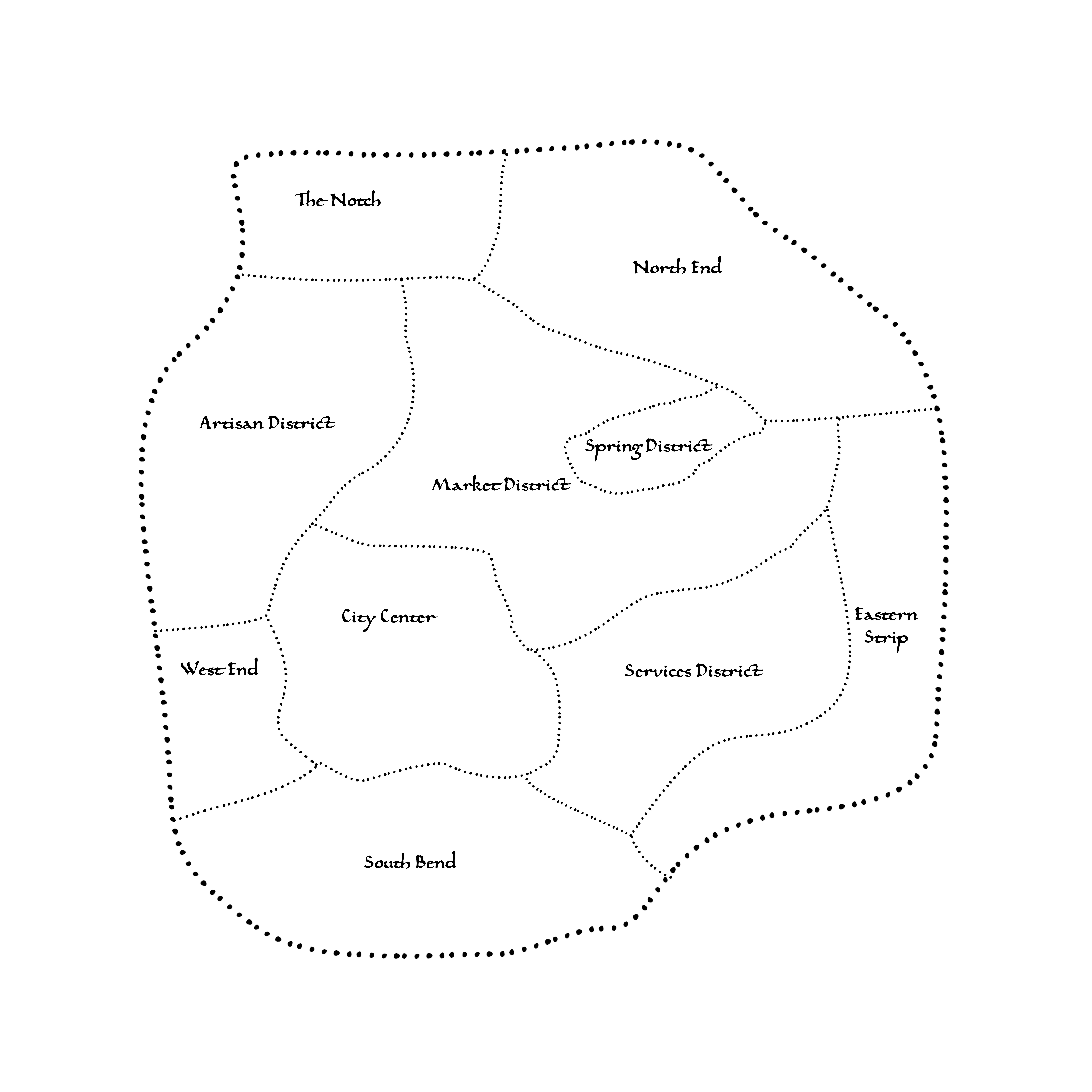
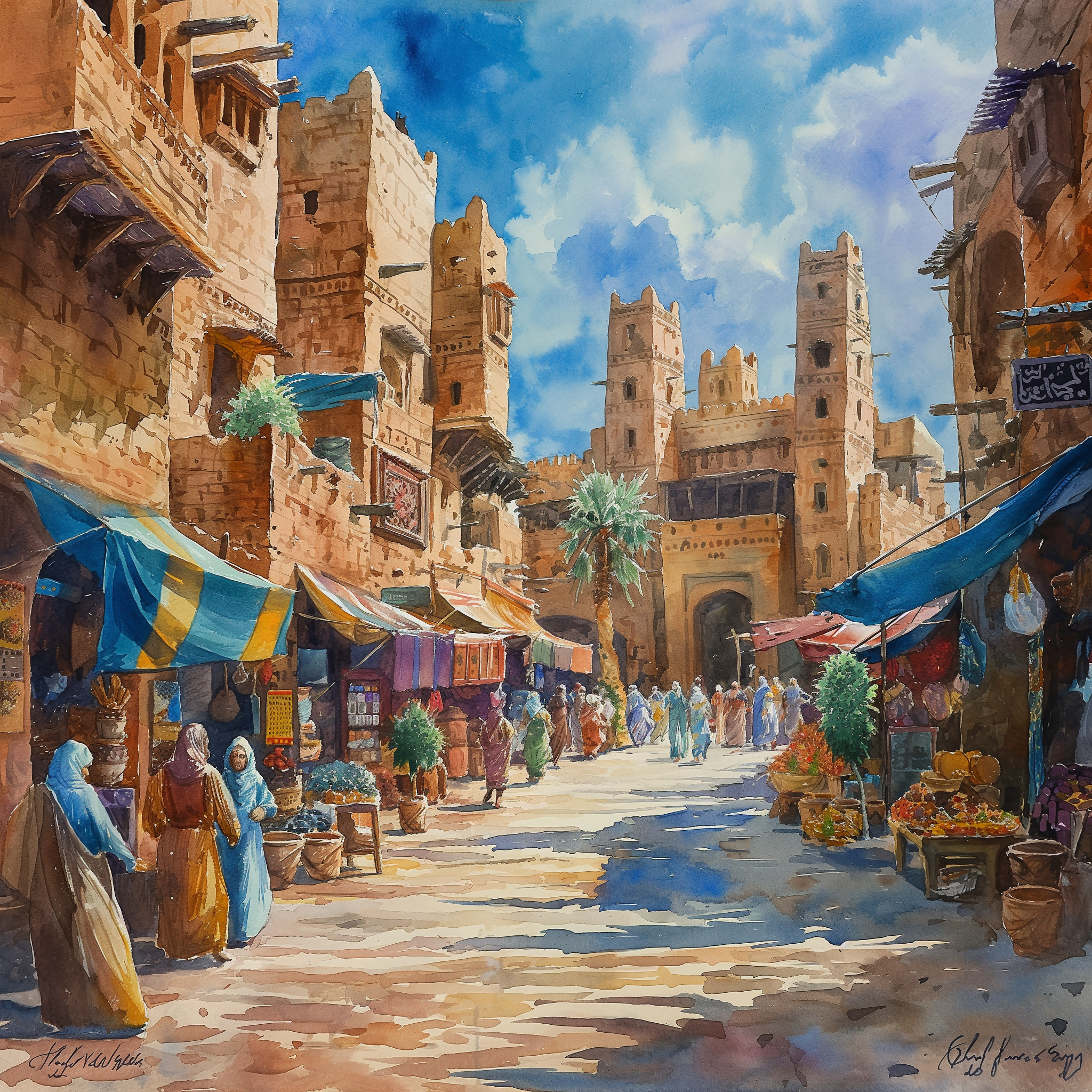
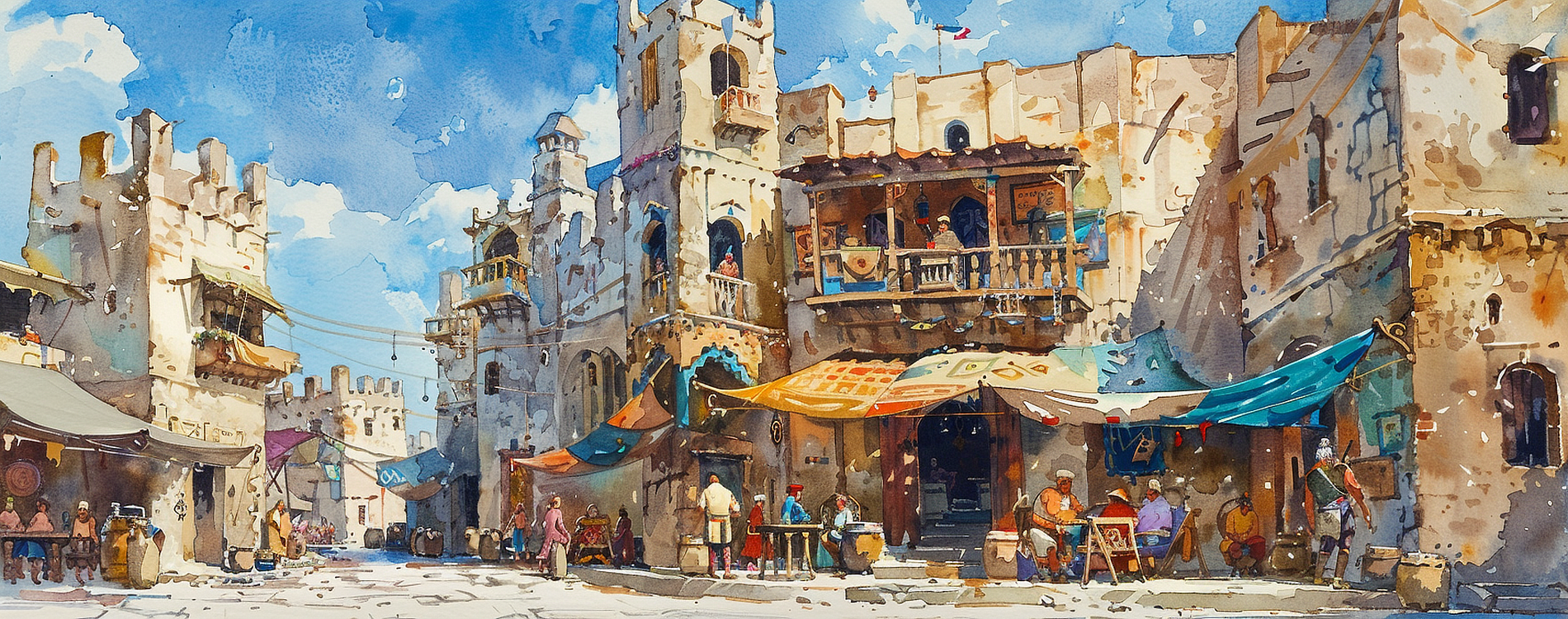
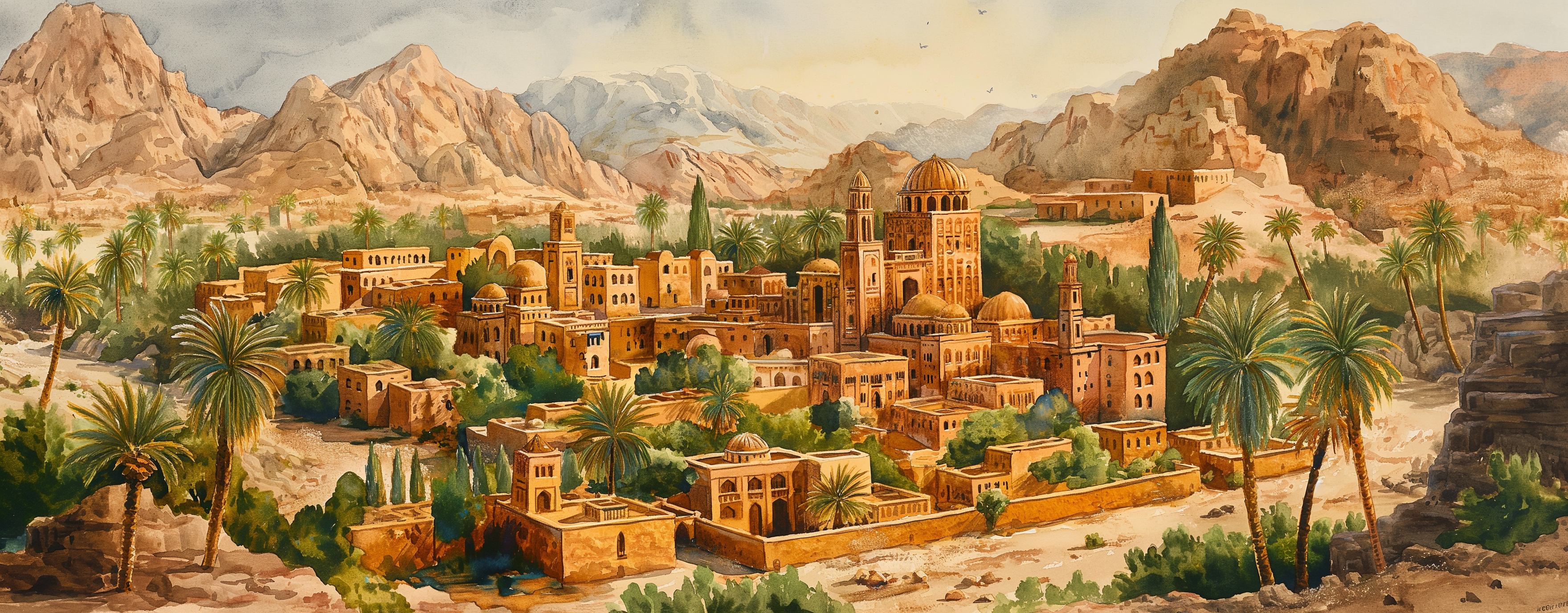
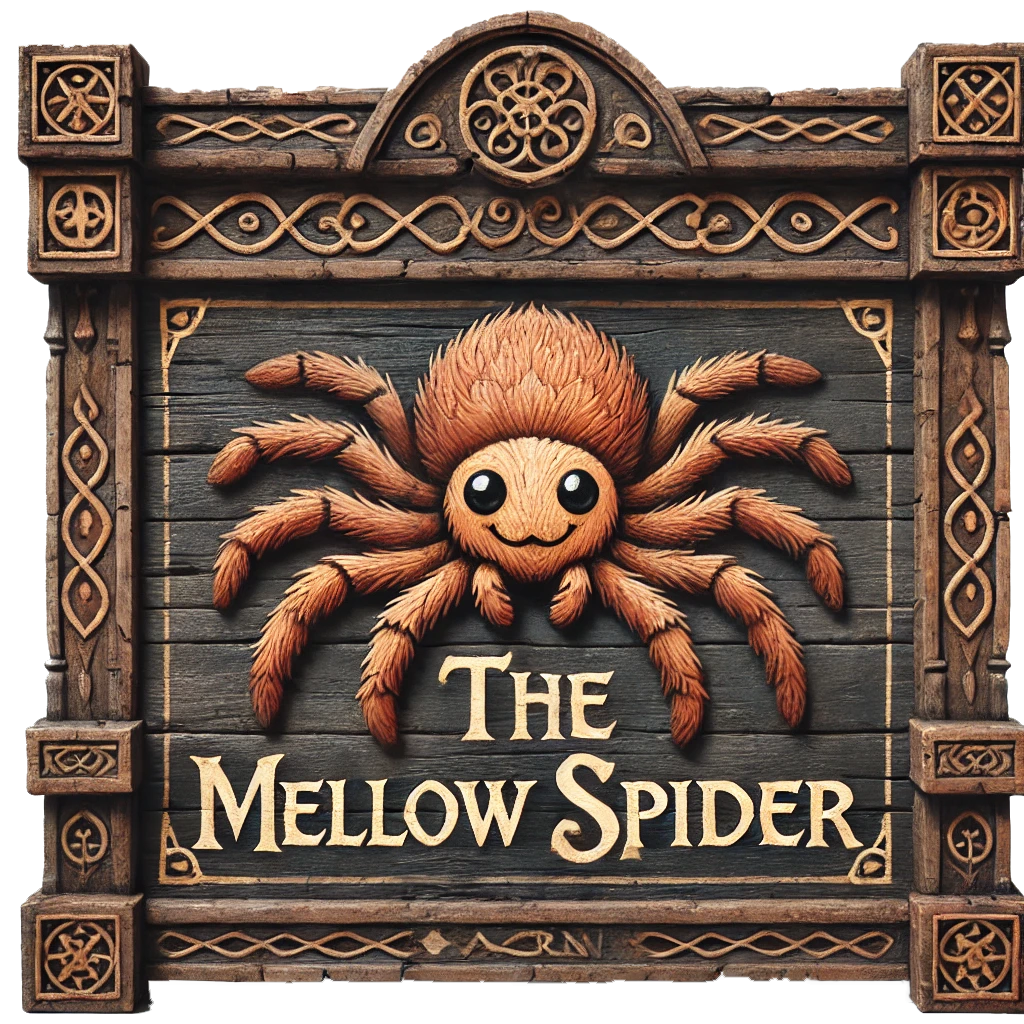
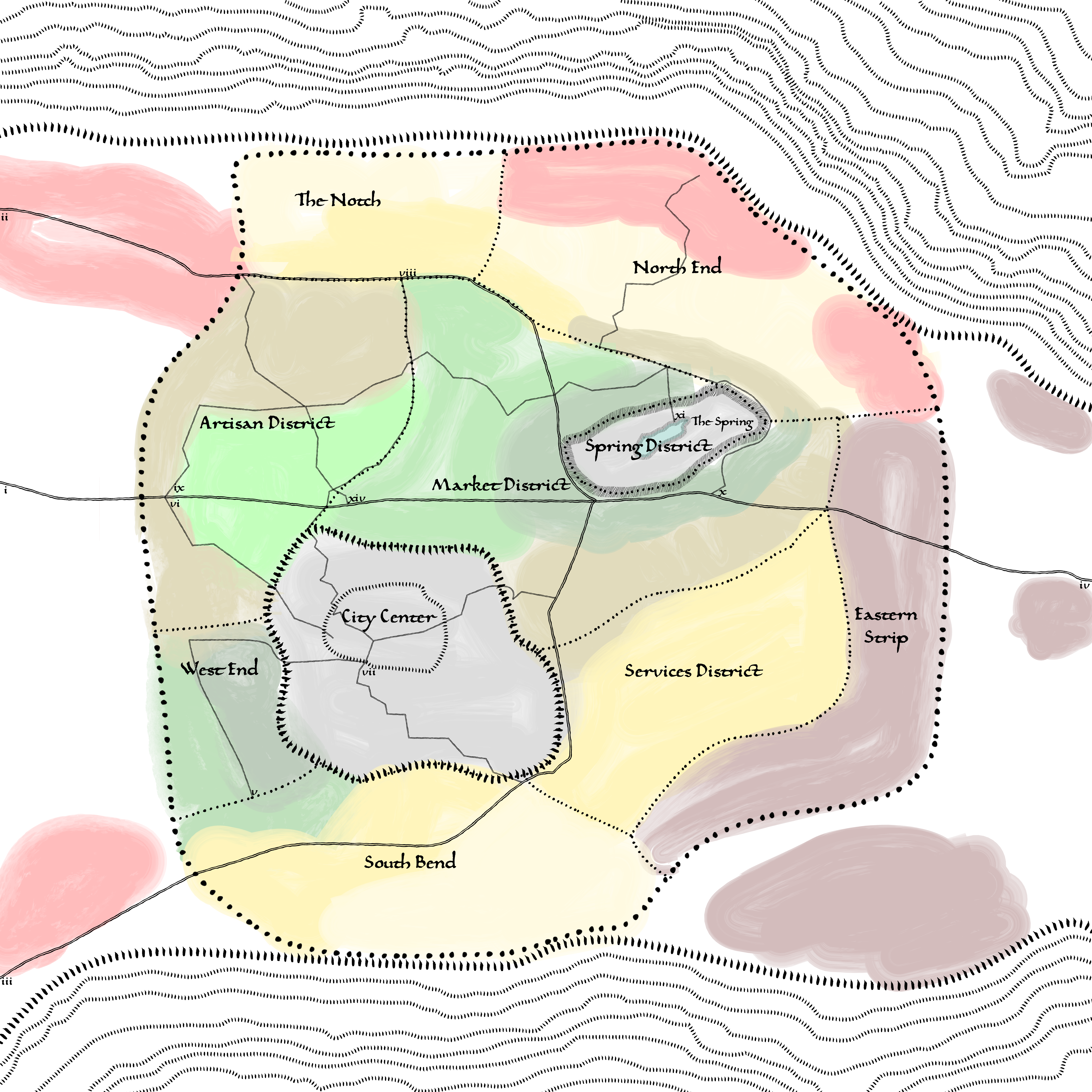
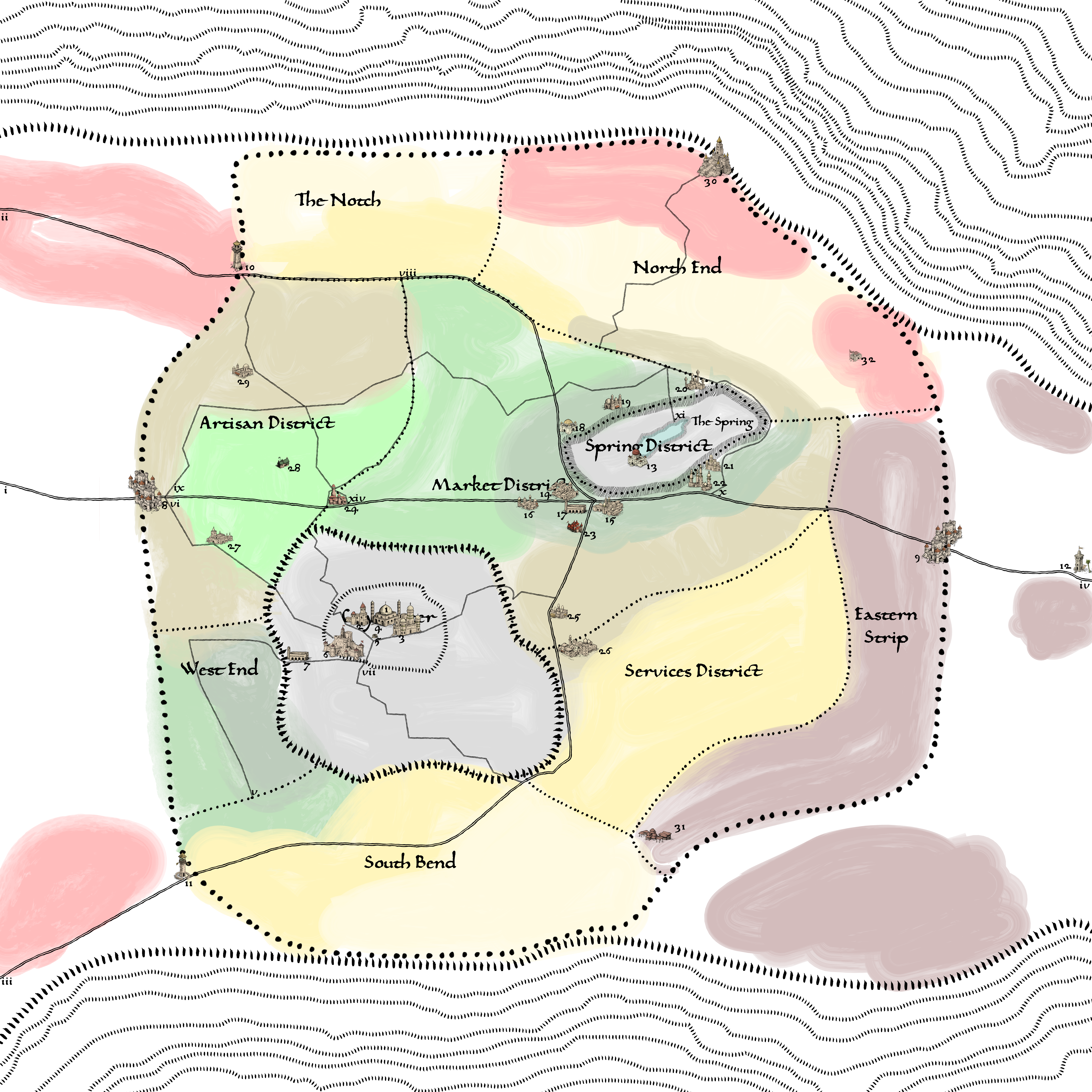






Comments